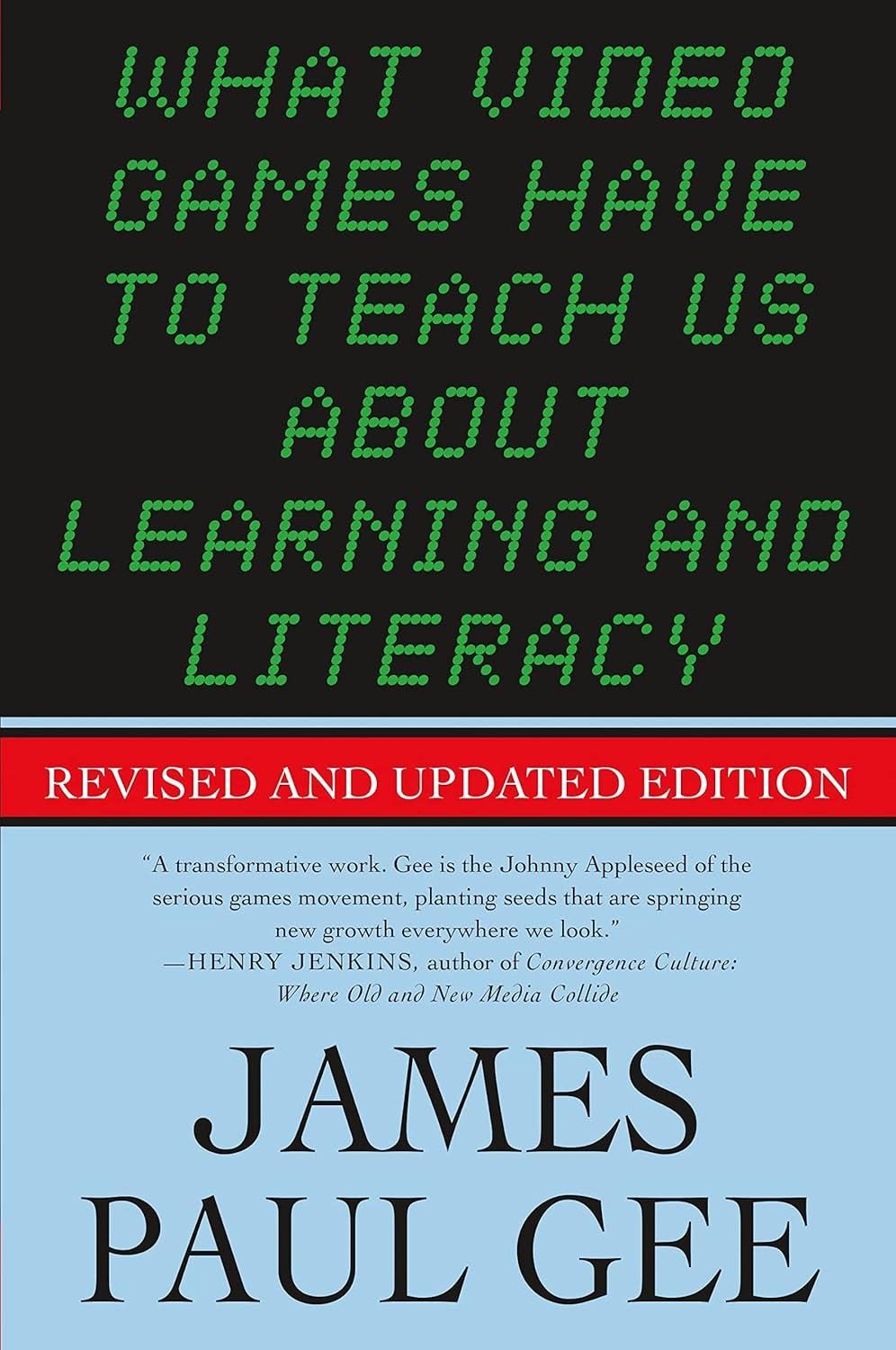Exploring the Intersection of video Games and Education

productos en HTML
I've found this book to be incredibly insightful into how video games, even those deemed "violent," can positively impact learning and literacy. James Paul Gee examines how games like *World of Warcraft* and *Half Life 2* foster cognitive development by emphasizing identity formation, meaning-making, and strategic thinking. The expanded theories in the revised edition offer a fresh viewpoint on how players engage with complex systems, evaluates commands, and perceives the world dynamically. The book’s analysis of major cognitive activities, such as role-model selection and command evaluation, provides a strong framework for understanding modern learning methods.
Bold text for emphasis on key takeaways includes gee’s assertion that games cultivate "situated learning," where players actively construct knowledge through immersive experiences. The book’s approach challenges traditional views on education by highlighting the agency and critical thinking required in gaming. While some may find the academic tone dense, the real-world examples make it accessible and thought-provoking. The revised edition’s inclusion of newer games ensures the content remains relevant in an ever-evolving digital landscape.
Here’s a summary of the book’s key features, pros, and cons in a compact table:
| Feature | Pros | Cons |
|---|---|---|
| author | Respected educator | Academic tone |
| Content | Explores modern games | May feel dated for some |
| Approach | Focuses on cognitive growth | Complex theories |
| Revised edition | New examples included | Lacks visual aids |
Unveiling Key features and Innovations of the Second Edition

James Paul Gee's exploration into video games offers a powerful lens through which to view learning and literacy. I found his assertion that even violent games can contribute positively to cognitive development particularly insightful. By examining games like World of Warcraft and Half Life 2, Gee demonstrates how these interactive experiences enhance our understanding of identity formation, meaning-making, and critical thinking. His analysis of how players evaluate commands and perceive the world provides a fresh perspective on traditional educational methods.
The revised edition expands on cognitive theories, making the book valuable for educators and parents alike. I appreciated how Gee connects gameplay mechanics to real-world learning, showing how strategies like problem-solving and collaboration in games transfer to academic success. His focus on digital literacy is especially relevant in today's increasingly mediated world, where understanding how to navigate and interpret interactive media is just as important as traditional literacy skills.
| Key Features | Pros | |
|---|---|---|
| Updated content | New game evaluations | Some theories might potentially be advanced |
| Focus on cognitive development | Practical strategies for learning | Limited scope on non-digital games |
| Relevance to modern education | Structured approach to literacy | Heavy academic tone for some readers |
Diving into Practical Applications for Modern Learners

I've found James Paul Gee's book to be a fascinating exploration of how video games,especially those labeled as violent,can positively impact learning and literacy. Gee argues that games like *world of Warcraft* and *Half Life 2* encourage critical thinking, problem-solving, and collaboration, using these skills to develop a sense of identity and meaning-making. His analysis draws on cognitive development theories, showing how players evaluate commands, choose role models, and perceive the world through interactive, immersive experiences. The revised edition incorporates newer games and expands on these concepts, making it a valuable resource for educators and parents looking to understand the educational value of gaming.
Gee's approach challenges traditional views by highlighting the cognitive benefits of games, emphasizing that they require players to engage in complex, multi-layered thinking. His insights into how games foster literacy—both traditional and digital—provide a powerful lens for重新thinking educational practices.The book is accessible yet insightful, offering practical takeaways for anyone interested in how technology can enhance learning. However,some may find the theoretical framework a bit dense,and the focus on certain games might not resonate with all readers.
Here’s a summary of key features, pros, and cons:
| Key Features | Pros | Cons |
|---|---|---|
| Focus on cognitive development |
|
|
Insightful Perspectives on How Digital Play Enhances Literacy
James Paul Gee's book offers a fresh perspective on video games,emphasizing their potential to enhance learning and literacy. through engaging analysis, he explores how games like "World of Warcraft" and "half Life 2" foster cognitive development by encouraging players to develop identities, grasp complex meanings, and make strategic decisions. Gee argues that these activities are not just for fun but are valuable learning tools that mirror real-world challenges and processes.
The revised edition extends these ideas by integrating updated game examples and expanding theories of cognitive growth. Gee shifts the focus from mere criticism to celebrating the educational value of games, highlighting how they build skills in problem-solving, collaboration, and critical thinking. This approach challenges traditional notions about educational software and opens up new avenues for teaching and personal development.
| Key Features | Pros | Cons |
|---|---|---|
| updated game evaluations | • Engaging content | • Some theories may be advanced |
| Focus on cognitive activities | • Builds critical thinking | • Limited traditional literacy focus |
| Expanded theories of development | • Relatable examples | • May not suit all readers |
Embrace a New era
Inspired by the insights shared, educators continue to harness gaming's potential for dynamic and immersive learning experiences.
Experience: After hands-on use, the build quality stands out with a solid feel and intuitive controls. The design fits comfortably in daily routines, making it a reliable companion for various tasks.
| Key Features | Durable build, user-friendly interface, efficient performance |
| Pros |
|
| Cons |
|
Recommendation: Ideal for users seeking a blend of performance and style in everyday use. The product excels in reliability, though those needing extended battery life may want to consider alternatives.

